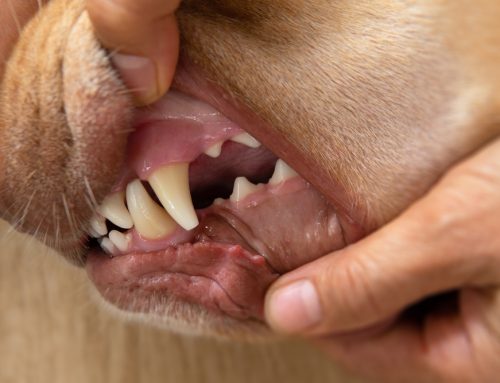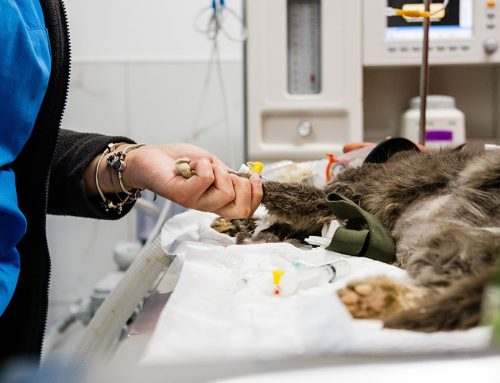It’s one of the most common concerns we hear from pet owners:
“I found a lump on my dog—should I be worried?”
Or,
“My cat has a bump that wasn’t there last week—is it serious?”
While many lumps and bumps are harmless, some can signal underlying medical conditions that require urgent attention. Knowing what to look for—and when to call your veterinarian—can make all the difference.
At Rustebakke Veterinary Service, we provide expert care in evaluating and treating lumps and bumps in pets. From benign growths to more serious concerns, our team in Clarkston, Washington, uses advanced diagnostics and a compassionate approach to keep your pet healthy and comfortable.
What Are Lumps and Bumps in Pets?
Lumps and bumps are abnormal swellings that may appear anywhere on a pet’s body, including the skin, under the skin, or within deeper tissues. These masses can be soft or firm, movable or fixed, painless or painful. While some remain stable for years, others can change rapidly—and those changes can be an important signal.
Common Types of Lumps Found in Pets
- Lipomas
These are soft, non-painful fatty tumors often found under the skin of older dogs. They’re benign but should still be monitored for changes in size or shape. - Cysts
Fluid-filled sacs that may be harmless but can become inflamed or infected. Sebaceous cysts, for example, form when oil glands become blocked. - Abscesses
Painful swellings filled with pus, often resulting from infections or bites. These typically require drainage and antibiotics.
Learn more about abscesses in cats – Purina UK
- Mast Cell Tumors
A type of skin cancer most commonly seen in dogs. These tumors can look like any other lump but may change size quickly, become red or itchy, or ulcerate. Early diagnosis is essential. - Elbow Calluses
Thickened skin over pressure points, particularly in large breeds. These rough patches can resemble growths and are often confused with more serious issues.
Read more: Dog Elbow Callus – ToeGrips
What Causes Lumps and Bumps in Pets?
Lumps can develop for a variety of reasons, including:
- Age: Older pets are more prone to growths such as lipomas and sebaceous cysts.
- Infections or Inflammation: Bacterial infections or inflamed glands may lead to abscesses or swollen lymph nodes.
- Trauma: Bruising, hematomas, or localized swelling can result from injuries or insect bites.
- Cancerous Growths: Malignant tumors may arise from skin, fat, connective tissues, or internal organs.
When Should You See a Veterinarian?
How do you know if a lump is an emergency—or if it can wait?
Here are some general guidelines:
Urgent Signs That Warrant Immediate Veterinary Attention:
- The lump is growing rapidly or appears suddenly
- The lump is painful, warm, or red
- There is discharge (blood, pus, or fluid)
- Your pet is licking, biting, or scratching at the lump
- The lump changes color, texture, or shape
- The lump bleeds or ulcerates
- Accompanying symptoms such as fever, lethargy, vomiting, or weight loss
Recognize signs of cancer in pets – AAHA
When It Might Be Okay to Monitor:
- The lump is soft, not painful, and hasn’t changed in weeks or months
- Your veterinarian has previously evaluated the mass and advised observation
- No other symptoms are present, and your pet is eating, drinking, and behaving normally
Even benign lumps can become problematic if they grow large enough to interfere with mobility or become irritated. When in doubt, schedule an exam.
How Vets Diagnose Lumps and Bumps
Step 1: Physical Examination
Your veterinarian will examine the lump’s size, shape, location, texture, and whether it’s movable or attached to underlying tissue. A full physical exam also checks for other hidden masses or abnormalities.
Step 2: Diagnostic Testing
- Fine Needle Aspiration (FNA)
A small needle is used to extract cells from the lump, which are examined under a microscope to determine whether the cells appear benign or cancerous.
More on cytology – Today’s Veterinary Practice
- Biopsy
A tissue sample may be surgically removed and sent to a pathologist for a more definitive diagnosis, particularly when cancer is suspected.
Step 3: Imaging
If a lump is internal or the veterinarian suspects it has spread, imaging may be recommended.
- X-rays – Useful for assessing bone involvement or looking for metastasis.
Read more: X-ray Imaging – UC Davis
- Ultrasound – Helps evaluate soft tissue masses and internal organs.
More on ultrasound – UC Davis Veterinary Medicine
- CT Scans & MRI – Provide detailed views of deep or complex masses, especially those involving the chest, abdomen, or brain.
CT Scans for Dogs – Dog Cancer
Guide to MRI – Hallmarq
Treatment Options for Lumps and Bumps
Observation and Monitoring
Benign masses like small lipomas may simply be monitored for changes over time. Your veterinarian may record measurements and recommend rechecks every few months.
Medications
- Antibiotics for infections such as abscesses
- Anti-inflammatory medications or corticosteroids to reduce swelling or inflammation
- Topical treatments for skin irritation or calluses
Surgical Removal
Lumps that are painful, growing, or suspected to be malignant often require surgical excision. The tissue is typically submitted for histopathology to determine the exact nature of the mass.
Post-operative care includes wound monitoring, pain management, and possibly additional diagnostics depending on the biopsy results.
Cancer-Specific Treatments
- Chemotherapy and radiation therapy may be recommended for malignant tumors, depending on the type, stage, and location of the cancer.
Resources for pet cancer care – Veterinary Cancer Society
Prevention and Long-Term Care
Routine Veterinary Exams
Regular check-ups allow early detection and monitoring of new growths. Your vet may recommend baseline bloodwork or imaging to catch internal problems before symptoms appear.
Home Monitoring Tips
- Check your pet weekly during grooming or petting
- Gently run your hands over your pet’s body, feeling for any new lumps or bumps
- Keep a log of size, texture, and any changes
- Notify your veterinarian if a lump appears or changes over time
Learn how to examine your pet at home – Humane Society
Emergency Lump Care at Rustebakke Veterinary Service
Rustebakke Veterinary Service is proud to offer 24/7 emergency care for pets experiencing concerning symptoms, including rapidly growing or painful lumps. Whether it’s late at night or over a weekend, our team is ready to respond when your pet needs help most.
To request urgent care or schedule a diagnostic consultation, visit our Request Appointment page.
While not every lump is dangerous, no new lump should ever be ignored. Early detection and accurate diagnosis are crucial in giving your pet the best chance at a full and healthy life.
At Rustebakke Veterinary Service, we’re here to provide expert evaluations, personalized treatment plans, and the peace of mind you need when something doesn’t feel quite right. Whether it’s a simple lipoma or something more serious, we’ll guide you every step of the way.
Worried about a new lump on your pet? Don’t wait and wonder. Contact us today to schedule an exam.
Your pet’s health, comfort, and longevity are our top priorities.








Leave A Comment